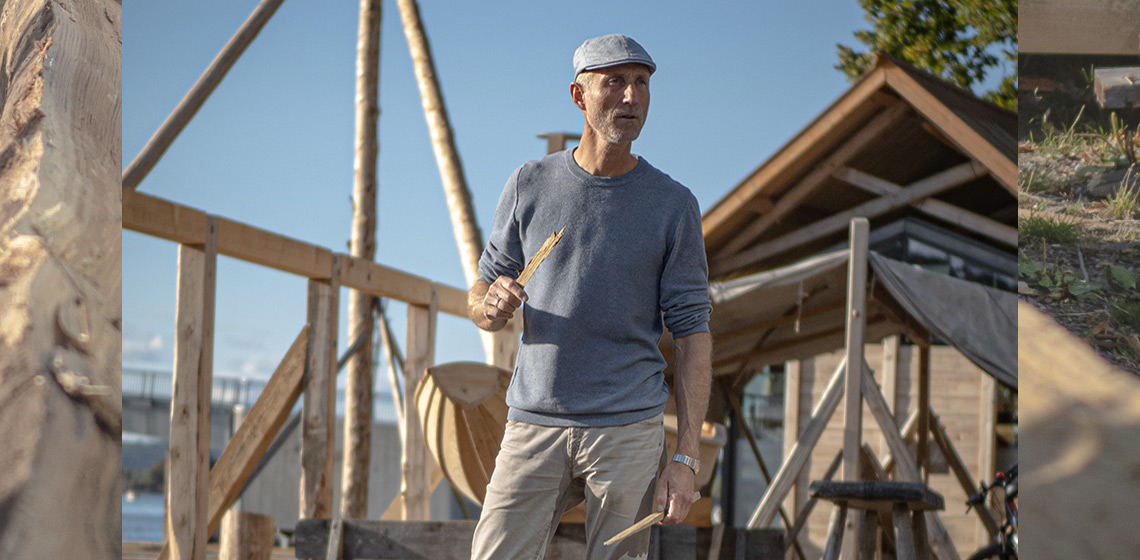
The Norwegian Forum of Experimental Archaeology (NFEA) 2020 was held between the 18-20th of September at Midgard Viking Centre in Horten, Vestfold and Telemark County in Norway. Midgard Viking centre, one of the museums falling under Vestfoldmuseene, has a strong emphasis on living history and collaboration with volunteer groups, using living history as a tool to create an immersive experience.
The ongoing Covid-19 pandemic forced this year’s forum to mostly consist of a regional event, rather than initially planned with an increased international focus. The restrictions also limited the number of participants to around forty.
The program started on Friday 18th at 4 pm in Tønsberg, followed with a full day of seminars and the conference dinner on the second day. The third day, as is the tradition of the forum, the public was invited to experience different craftsmanship’s, experimental archaeology demonstrations, and project displays.
The first day
During the first day of the NFEA, the association Oseberg Vikingarv (an experimental archaeology association) presented their ongoing reconstruction of the Gokstad skip, dated to 890 CE. This is the third large reconstruction project conducted by Oseberg Vikingarv. Jan Vogt Knutsen gave an interesting lecture combined with a tour of their shipyard in the hot, summerlike weather. After the orientation it was clear to all that this is not a small project and the process requires a string of smaller experiments before the building process can even start.
The shipyard is situated in the city centre and is a unique opportunity for educating the public about experimental archaeology and the maritime legacy of the late Scandinavian iron age.
The second day
Saturday was dedicated for the several lectures, held in the conference room at Midgard Viking Centre. Fredrik Bjønnes from Midgard opened the event with a warm welcome and a video presentation by Roeland Paardekooper, director of EXARC. Gjermund Kolltveit presented to the audience practical experiments with music and sound.
The first half of the day ended with Katja Regevik, leader of Tingvatn fornminnepark presenting the Snartemodugnaðr project. This project is based on a collaboration between researchers, craftspeople and museum workers. The aim is to create new knowledge about the famous graves at Snartemo. An important part of the project is the reconstruction of the tablet woven bands based on the project’s new interpretation.
After a lunch in the sunny Borrepark the second half of the day continued with Bente Skogsaas showing different tablet weaving techniques from the famous Oseberg burial. Nils Anderssen followed up with a presentation on how to produce precious metal inlays, using the Koftgari technique. This is known as valbǫstum in old Norse, translated into Frankisk bast in modern Norwegian. The presentation was followed by a practical demonstration on the following day, where everybody was given the opportunity to try this technique. PhD student Sverre Christoffer Guldberg presented his work on lime and mortar production. This presentation was also paired with a practical demonstration the following day by Atle Ove Martinussen.
The second half of the day ended with Ellen Marie Næss from the Viking Ship Museum talking about the new Viking museum at Bygdøy that will be completed in 2025. In the new museum, experimental archaeology will be an integrated part of the visitor experience.
After the lectures Midgard Viking Centre hosted a small conference dinner in the feast hall. The hall is an interpretation of a fictitious hall set in the year 822 AD. Here the guests were served historically inspired food and beverage, while the discussion continued.
The third day
Sunday was the last day of this year’s forum, and the focus was on practical demonstrations and project display. Taking place outside of the feast hall, visitors and participants were given the opportunity to experience the past. Volunteers from Midgard Viking Centre Friends of the museum (Midgard vikingsenters venneforening) contributed with different craft displays, including plant dying with hot stones, spinning thread with drop spindles, tablet weaving and the construction of historical bows. Accompanying the theoretical presentations given on the previous day, Nils Anderssen held a Koftgari workshop, whilst Atle Ove Martinussen demonstrated lime and mortar production. In addition, Jørgen Bøckman carried out an experiment recording the sound of the different crafts. The idea is that sound is an important part of the visitor experience, but this aspect is often not present in museum exhibitions. By adding sound to exhibitions, museum visitors can get a different experience of the past.
The different stalls gathered visitors, forum participants and other guests as they walked by. A reporter from NRK Radio created a 30 minute long feature about the forum, talking to many of the participants. The historical setting of this final day of the forum helped in creating a more immersive experience for everybody.
The need for defining technical terms in Norwegian academia for experimental archaeology
The lack of precise and well-known definitions for experimental archaeology in Norway is a challenge. As the experimental archaeology scene in Norway is small, many compare it with living history and re-enactment. Sverre Christoffer Guldberg raised the question why we are lacking the necessary technical terms to better define experimental archaeology as an academic discipline. This is a question for the Norwegian Forum of Experimental Archaeology of 2021.
To conclude, based on my own experience and feedback from many of the participants, NFEA 2020 was a successful event despite the limitations caused by the Covid-19 pandemic. Hopefully it will be possible to have a more international event in 2021 at Midgard Viking Centre and expand on the interesting topics and questions addressed in 2020.
Note: interested in participating for the 2021 event? Contact Fredrik Bjønnes: Fredrik.bjonnes@vestfoldmuseene.no